Hongerige
(hawn-Gereeg)
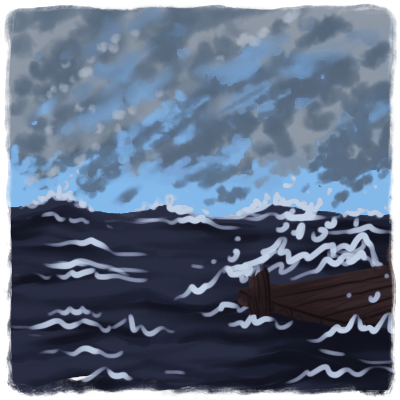
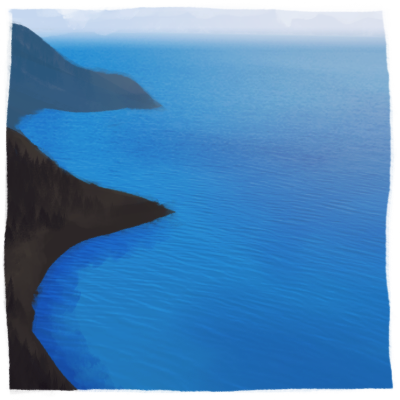
Residing Packs:
So aptly translated to 'The Hungry Wolf', the wild and untamed sea guarding the shores of Ulfrheim is unforgiving and cruel.
All who have, or ever will, live on Ulfrheim are taught at a very young age to respect and be wary of the churning and furious waves of their dark defender, the sea whose white horses tear the beaches to pieces and drag back all in their path to the deepest and darkest depths of the formidable ocean floor. Countless lives have been lost to the clutches of the Wolf, their souls trapped beneath the surface to wash so close to home but never quite touching the shore, forever lost in a salty limbo. Hongerige boasts plentiful fishing for those brave enough to venture closer, and for years the sea has claimed any boat that has ever dared to set a course for the fabled land of Ulfrheim, protecting it's inhabitants from the unwanted touch of Man. The air at the coast is crisp and inviting, pure and healthy with a permanent bite of frost to one's nose. Plant life on the sandy shores grows sparsely and consists mostly of tall grasses that sway and dance on the ocean breeze, their fronds long and bare with sharp edges, well adapted to grow even between the cracks in the rocks of the coastline cliffs. The deep blue of the sea stretches on and on with no end in sight, and the sandy beaches appear clean and pale like untouched snow, comfortably cold to the touch and always soft. The wind howls and the crashing of the waves block out most other sounds, some say the sound is relaxing while others shy away, rightfully intimidated by the sheer power of the sea.
Caves of Vaskar
(vas-kar)
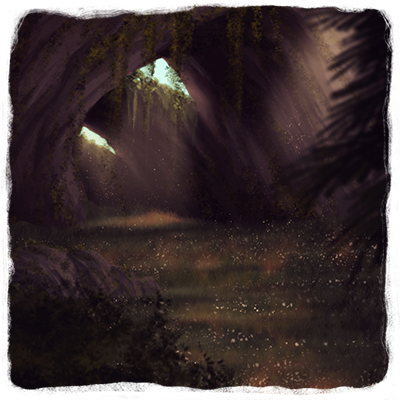
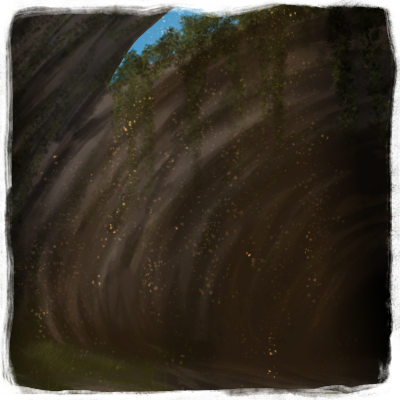
Residing Packs:
Vaskar is a network of labyrinthine caves and tunnels that only the truly brave may safely find passage.
The caves cut into the mountainside leading in from the dreaded Vale of Whispers and delves deep underground into the very core of Ulfrheim itself. The stone of it's walls is dark and inhabited by various mosses and other intrusive vines, tainting the view with sickly shades of green, eerie in the moonlight filtering in from the deep gashes through the roof of the cavern's entrance. A damp smell lingers here, like a wet cloth left out too long, a hint of mildew perhaps and no doubt thanks to the lichens growing across the walls. Huge stalagmites and stalactites stagger their way through the enigmatic tunnels like teeth in an almighty and endless set of jaws, while crystals grow and illuminate in the scarce light. The deeper one travels and leaves behind the convenient holes in Vaskar's ceiling, the darker and more perilous the journey becomes. Sounds appear muted and oddly enough there is no echo, no hint or warning of anything else lurking in the shadows. There is always a shiver here to travel your spine, a wave of cold fear in the face of the unknown. Only the most seasoned of warriors may safely travel the network, the bravest and most fearsome even dare to claim the depths as their home and are creatures of legend for the weaker of heart.
The Great Maw
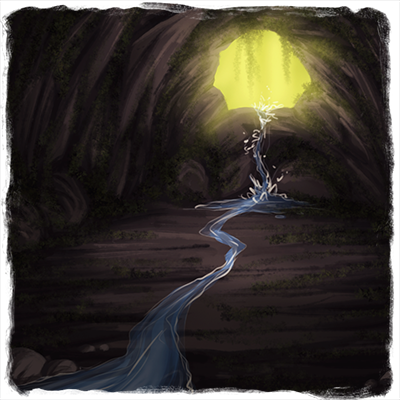
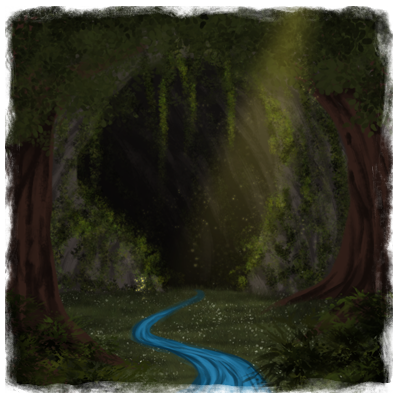
Residing Packs:
The fabled home of the Father God Fenrir himself, The Great Maw is now home to the Trinity and their most trusted companions, also known as the Alphas.
This vast cavern is the largest system of caves on Ulfrheim, and to this day it has still never been completely explored by it's inhabitants. Streams and waterfalls gather in crystal clear pools and the light of the sun always fills the threshold with a warm and welcoming light, caressing those deemed worthy as they bask in their deserved honor. Often the Alphas can be seen entering and exiting their lavish home, climbing with ease and grace from the gaping jaws of the Great Maw and into the wooded valley below. The Great Maw shadows the farming town of Skalaness and is considered a constant and well appreciated guardian, the watchful eyes of the Alphas and their legendary leaders envied by towns of a further distance. To stand and gaze out of the Maw, if you were to ever be so lucky, one would have a bird's eye view above the forest and down across Skalaness, on a clear day even Bardr is visible to the trained eye. A vast and dense forest guards the great cave from uneducated paws, and many have found themselves hopelessly lost trying to step foot into the shadow of the Father's cradle.
Melrakki
(mel-rahki)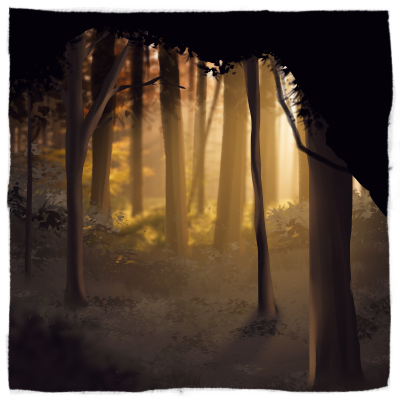
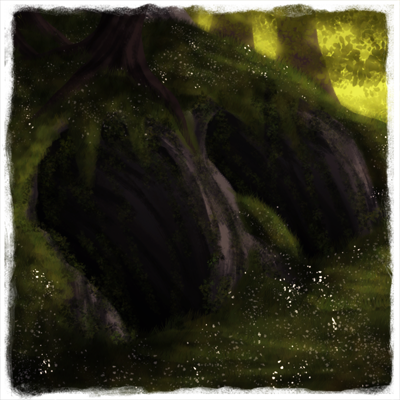
East of the Great Maw lies another cave, beautifully tinted green amongst the lush greenery and easily overlooked to the untrained eye.
Melrakki has for generations housed a legacy of nimble footed, forest-dwelling felvarg whom have dedicated themselves to protect whomever should inhabit the industrious village of Skalaness. Melrakki itself means 'white fox', and was named to honor one of Fenrir's first son's, a wise and able Felvarg with the wit of a fox and a pelt as white as fresh snow. Melrakki bestowed in his children his word of protection, initially spoken to the men and women of the town, but the code has since passed to it's new Felvarg inhabitants and will likely never shift. Melrakki is a place of beauty, two well hidden passages open up into a spacey cavern beneath the roots of the forest, draped with various vines and mosses to conceal the threshold. Sunlight filters through the canopy overhead, and often the warm smell of fresh grass lingers in the green courtyard. To traverse the woods leading to Melrakki, one must be sure of their footing and graced with impeccable agility as well as a steadfast sense of direction; like most forests on Ulfrheim, it is very easy to become turned around, and as noble as the inhabitants of Melrakki are, they do not take kindly to uninvited guests.
Sanna's Grasp
(san-nas)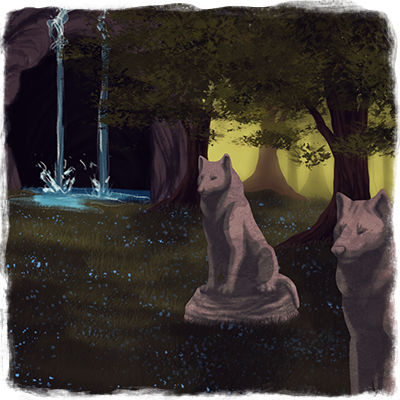
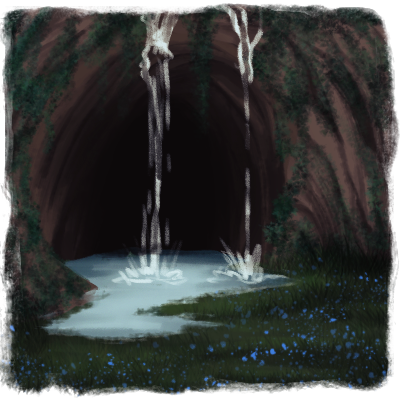
Sanna's Grasp is a cavern guarded by Haldor's Pass, overlooking the small fishing town of Reynir, and is housed by faithful followers of the Goddess Freyja to guard and tend to the shrine erected in her honor.
The mouth of the cavern is partially covered by two trickling streams, tapering away from a large waterfall higher in the mountains where it gathers in a small and crystalline pool at the threshold. The water collected here is said to hold healing properties, and the Felvarg residing here often distribute it to the sick and the hopeless in hopes of raising their spirits and mending their souls. Sanna's Grasp is sparsely surrounded by tall trees, and statues of the Goddess Freyja dot the perimeter where offerings of fresh wildflowers are placed daily. The air here smells sweet and fresh, inviting the wariest of travelers to rest their feet if even for just a while. Glancing out from the foot of the cavern, one has a clear view of Reynir to the south, and to the east, the Shrine of Freyja rises from the horizon. The meadow surrounding the cave is filled yearly with seasonal flowers and healing herbs, it is quite possibly the most inviting place in all of Ulfrhem.
Pass of Heidrun
(He-drun)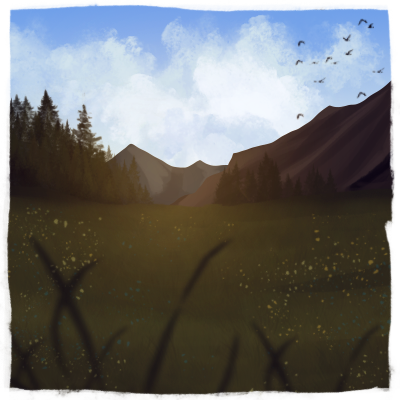
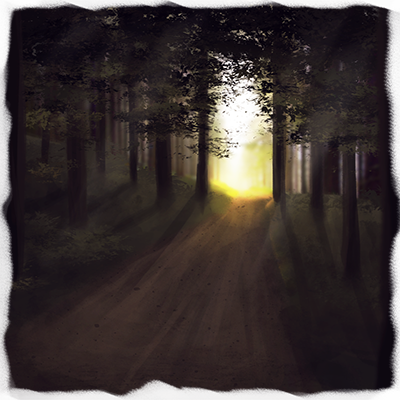
Residing Packs:
Abandon all hope, ye who enter here, for the Pass of Heidrun will surely lead you to your doom.
This uncharted forest path leads off from the seemingly pleasant meadow passing the western side of lake Lysa, but be warned, for the scenery changes drastically once one's paws stray from the path. The trees surrounding Heidrun appear to move and shift in the shadows, disorienting the traveler until one finds themselves hopelessly lost, with no view of the inviting meadow they so willingly chose to stray from. Sunlight struggles to penetrate the thick canopy of trees and an eerie mist always seems to linger just above the ground, swirling into ghastly figures around lost travelers and ultimately leading them further and further astray. There is no true path through the Pass, at least not one that anyone living has ever traveled, and so finding one's way to Heidrun itself is a feat, but to call it an impressive one would be foolish. Heidrun's cave is a network of twisting caverns that plummet deep beneath the Spine of Odin, and on and on into Hel itself. No light penetrates the fearsome threshold and the walls appear to be permanently damp, the smell of wet lichen is strong in one's nose and all sense of direction fails you.
Helheim's Gate
(hell-hime)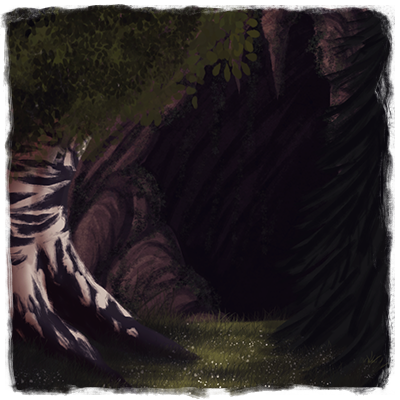
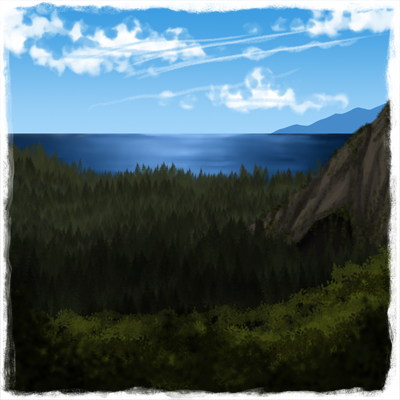
Residing Packs:
At the very south of Ulfrheim lies the most ferocious and dangerous of caves you will ever have the misfortune of stumbling across.
Helheim's Gate is aptly named as the literal doorway to the dark Goddess Hel's domain, a place which surely the traveler would never return from, and is guarded by the wickedest Felvargs to ever taint the world. Situated behind the Spine of Odin, Helheim is permanently in the shadows and is seemingly void of all other life; there is no birdsong nor the faintest scent of prey. Helheim plunges down and down into endless and suffocating darkness, and through the endless labyrinth the furious crashing waves of Hongerige drown out all other sounds and can create the uncomfortable sensation one would expect if trapped within a seashell. All around in the dark it is common to feel the burning gaze of Hel's servants upon you, watching and waiting as you are stalked in the endless darkness while Hel herself awaits you in the very pit of the world. The souls of drowned travelers are said to haunt the caverns, spiteful sirens keen to tempt others to the same watery grave.
The Village of Hearth
(Harth)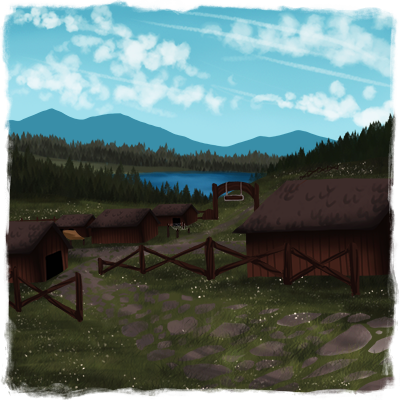
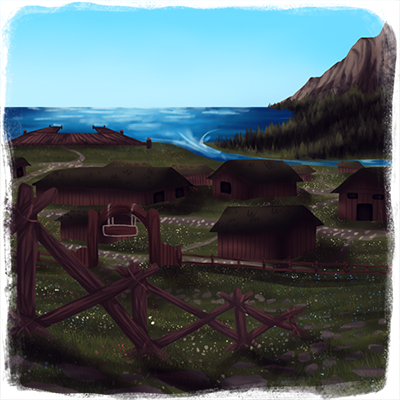
Residing Packs:
The vast shipyard that once connected Ulfrheim to the rest of the world now sits as a graveyard for rotting and long forgotten vessels of old, their tattered sails and sea-beaten hulls a painful and visual comparison to the relationship lost between their human makers and the Felvargs.
As busy as the town of Hearth still is, the ghosts of human traders long past still linger in the streets as well as the old, abandoned stalls that line the main road in and out of the port. Felvargs trained in their respective professions breathe life into the old bones of this trading center, offering goods of their own from homegrown herbs to specially crafted armors and cloaks. The exchange of currency is a very human habit borrowed and adapted by Felvargs old enough to remember such times when both co-existed, and yet young enough to share the secrets and knowledge of this interesting ecosystem. If one were to stand in the center of Hearth, one would experience the refreshing smell of the sea combined with the mouthwatering scent of roasting meats and freshly caught fish. One would also hear a chorus of voices shouting over one another, advertising their wares and laughing with one another, or bards singing tales of old to attentive children. Hearth connects all the towns of Ulfrheim into one large hub for convenience, and can be accessed easily by a road that cuts a path all through the land; all roads lead to home. Felvargs born and raised in Hearth have a certain way with words, and could likely sell you your own cloak for quite a pretty penny! They tend to have an eye for opportunity and are usually bestowed a trade or two from their parents, a knowledge that has likely spanned through generations into the present day.
The Village of Skalaness
(skala-ness)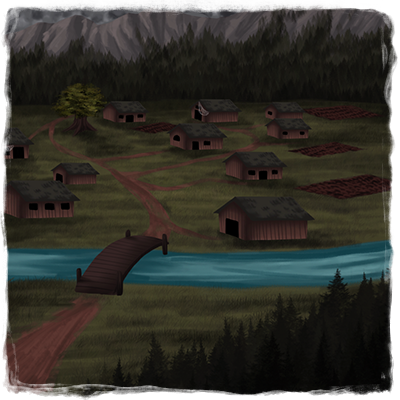
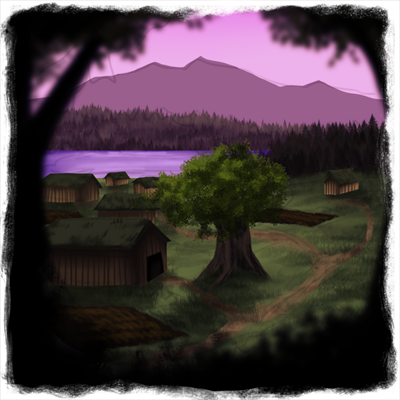
In the shadows of Melrakki, in between the lakes Heimta and Reisa, near the Great Maw, lies the town of Skalaness.
Skalaness is well known for being a farming town, and a place of healing and perseverance. Those who live here have a fascinating and priceless understanding for the world around them, and how to nurture life sustaining plants and herbs. This gift was bestowed by a farming colony of humans in times of old, entrusting their skill and knowledge into the loyal and gentle-hearted Felvargs who assisted them and protected their flocks; even now, it is not uncommon to see herds of sheep or cattle carefully penned and tended to by the industrious folk of Skalaness. Not only is Skalaness a place of farming, it is also a place of gifted healing. Like Sanna’s Grasp, Skalaness has been said to be blessed by Freyja herself and was fabled to have blessed it's original inhabitants with the skills of druidery. The kind heart comes naturally to the Felvargs here as they gather and study various herbs and potions to help others in need. Despite being bordered by hostile forests and dangerous caverns, Skalaness has managed to keep its peaceful ways intact. As one finds the path towards the main center of the largely spread town, one should know that the folk here thrive for peace.
The Village of Bardr
(Bar-der)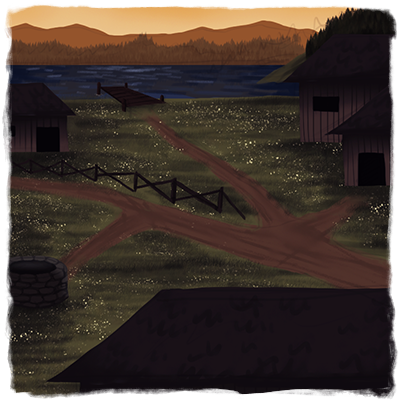
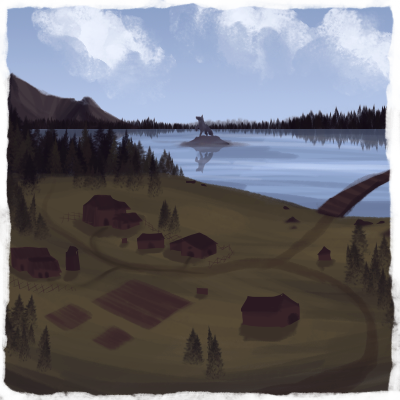
Residing Packs:
A small village on the shores of lake Reisa, the people of Bardr once used the waters to craft powerful weapons for the human inhabitants.
The small village of Bardr is world renowned for it's ancient forges, the birthplace of all weapons created in Ulfrheim. Reflected in the mysterious waters of lake Reisa, the inhabitants of Bardr believe the lake blesses their blacksmithery with immense power and indestructibility. Bardr is the birthplace of warriors and guardians, it's houses home to some of the greatest heros in combat Ulfrheim has ever seen. The Felvargs here have mastered the art of swordfighting and wield their weapons with great pride; in fact, it is a coming of age practise for all young Felvargs born in Bardr to craft their own first sword to gain the respect of their fellows. Although battletrained and fierce, the Felvargs of Bardr are not necessarily warmongers and do their best to keep the peace, offering their services first and bravely to keep their world safe.
The Village of Reynir
(ray-near)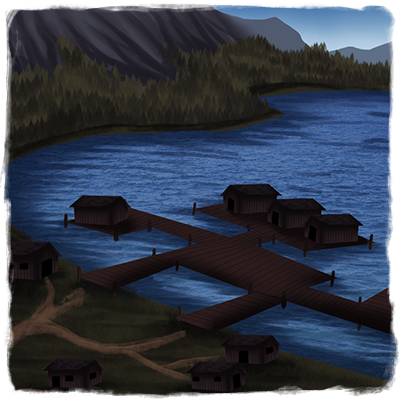
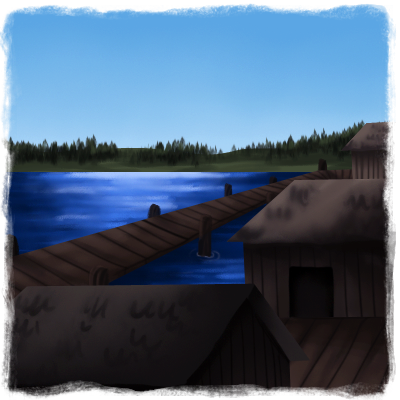
Once home to the best fisherman throughout the land, Reynir is now inhabited by Felvarg with the same gift.
Reynir, home to the greatest fishers Ulfrheim has ever seen, is nestled safely between the Shrine of Freyja and Sanna's Grasp, all the while protected by Haldor's Pass from outsiders and enemies alike. The Felvargs of Reynir should have been born with gills! They are by far the greatest swimmers, with webbed toes and a waterproof topcoat, they are practically invulnerable to the dangers of the lake and are raised in the water. They never miss a catch nor a kill, and their waters never seem to empty of fish big and small; the Reynir Felvargs believe their lake is blessed by Freyja herself, and often leave their biggest catches at her shrine to give thanks. Reynirian Felvargs are skilled with fishing nets and spears alike, they are versatile hunters who have adapted their lifestyle to hunting more than just aquatic prey, and have prospered on the lake for centuries.
The Village of Sandfell
(sand-fell)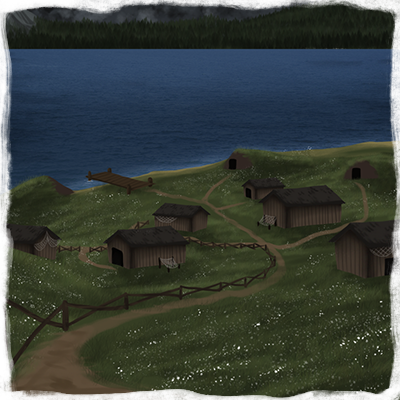
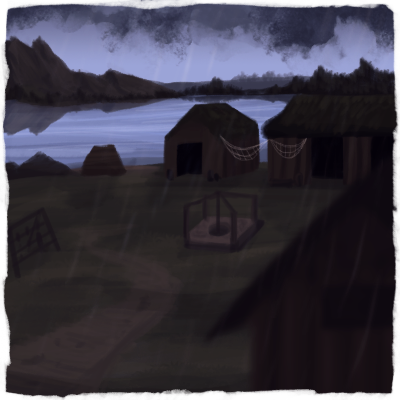
The sandy shores of Sandfell make the town the perfect home for potters and craftsmen.
Sandfell sits in the shadow of Helheim's Gate, but the denizens do not fear the demons at their doorstep, for they are protected by the mighty Seat of the Alpha in the north. The peoples of Sandfell are simple folk with keen eyes for detail and the patience of saints, their paws are delicate and their intelligence and patience unmatched. The residents of Sandfell use the clay-rich waters of Lake Lysa to sculpt beautiful pottery items, ranging from idols of the Gods to simple bowls for holding liquids and foods. Due to the clay in the soil, farming is hard in Sandfell and so the Felvargs here trade their wares with others in return for fresh herbs and other necessities. They are hardy folk who are hard to intimidate, for what could be more frightening than the doorway to the underworld itself ever looming in the south.
Shrine of Ragnarok
(rag-na-rok)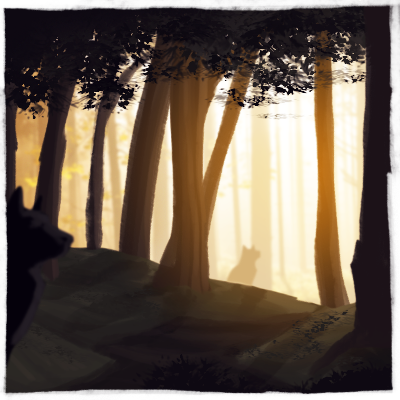
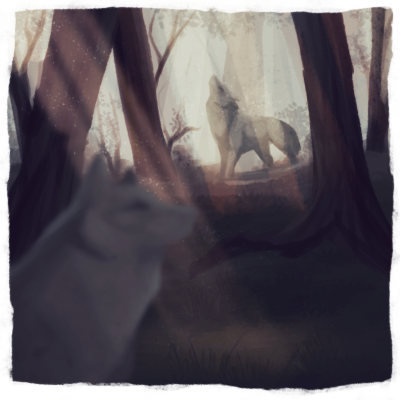
The final resting place of Fenrir's first son, Hakon, and the ground upon which the war began.
The Shrine of Ragnarok is known by every creature living on Ulfrheim as the final resting place of Hakon, the first Felvarg to fall in the human war and the beloved son of Fenrir himself. Many Felvargs have been laid to rest at these sacred grounds, mostly others lost in the war after Hakon's fall. The Alphas visit the shrine regularly and weep into the night, their howls said to travel into the heaven's themself. Elders tell tales of the war to their children and a silent respect is held by even the most wicked of Felvargs; none would dream of desecrating this holy ground, and no blood is ever to be shed here again in fear of waking Hakon from his eternal slumber.
Shrine of Freyja
(frey-ya)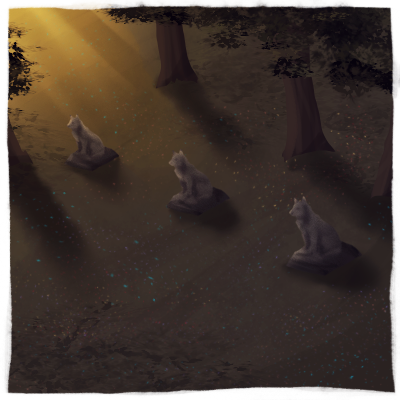
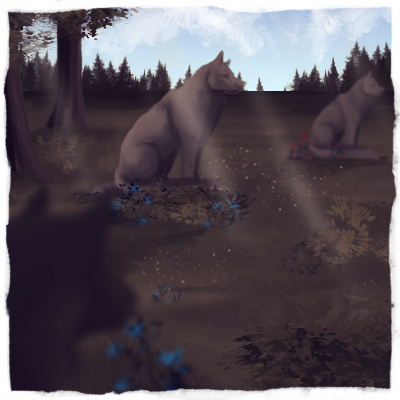
The final resting place of the Goddess Freyja and the Viking Warlord Skǫll.
The Shrine of Freyja, Ulfrheim's sacred resting place of the Goddess Freyja, the spot in which she selflessly gave her life in order to protect Ylva, Ulfr and Bjorn from Skǫll so many years ago. It was her grand gesture of love and devotion to the children of Fenrir that finally broke the enchantment Loki had cast upon the vikings, and it was here that Skǫll and Freyja ended the war with their deaths. It was also here that Fenrir sacrificed his soul to resurrect Freyja in his image, and where he left Ulfrheim to reside in the heavens, supposedly for all eternity. The shrine is guarded by the Felvarg's of Sanna's Grasp, and none may enter without explicit permission. Freyja is seen here frequently amongst the wildflowers and the statues erected in her honor. It is a place of peace and healing, and many travel here to seek her audience for help with their troubles, but only the true of heart are granted passage by her faithful guardians, and all others turned away.
Seat of the Alpha
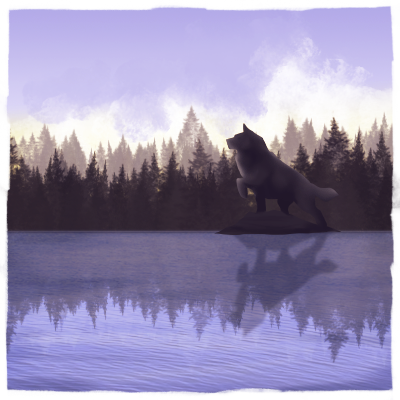
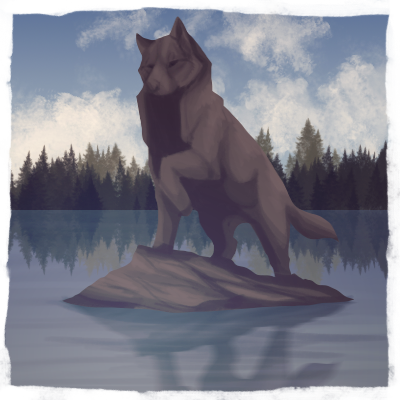
A great and towering statue of the Father God, Fenrir, the Seat of the Alpha is the most sacred and revered location on all of Ulfrheim.
The Seat of the Alpha can be seen from all points in Ulfrheim, and is a guiding image of the Father God's divine protection over the land. The statue was erected in his honor after the war between Felvargs and Humans ended, a bittersweet reminder of his sacrifice and an eternal memory of his children's sorrow at his leave. More recently, the Seat of the Alpha was the site at which the Mad God Loki attempted to slaughter Freyja herself and bring about a new war, a war with his dastardly titans that was stopped by the faithful children of Fenrir, who with Freyja's help, resurrected Fenrir himself at this very spot. Fenrir is seen here often, and offers council to his children for whatever they might need. Loki dares not step foot here.
Lake Reisa
(ree-sa)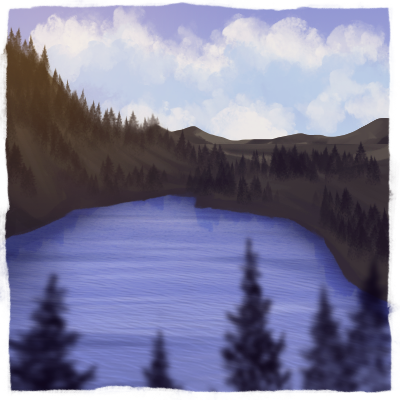
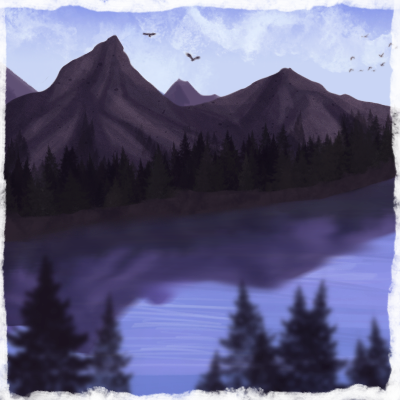
Residing Packs:
Nestled between the towns of Skalaness and Bardr, Reisa is a saltwater lake fed directly by the angry Hongerige sea.
At low tide, the water levels of Reisa drop significantly and the narrow lake connecting her to the sea dries up almost entirely. Any fish or other marine creatures in the lake become trapped there until the high tide returns, making it a prime location for saltwater fishing.
Lake Lysa
(lie-sa)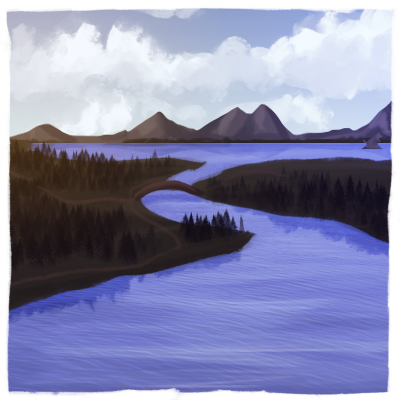
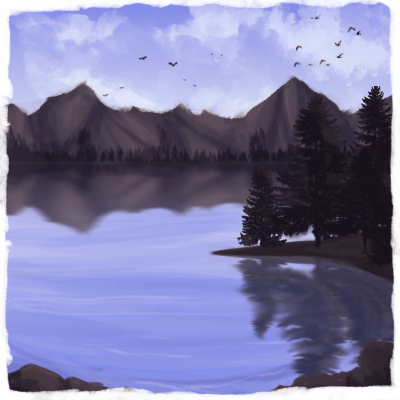
Shadowed by the Spine of Odin, Lysa is a large freshwater lake known for bearing a clay-like residue, which is highly sought after by the inhabitants of the neighboring town of Sandfell.
Lysa is a relatively large lake and offers a pinch of beauty to an otherwise foreboding area of Ulfrheim.
Lake Heimta
(heem-tah)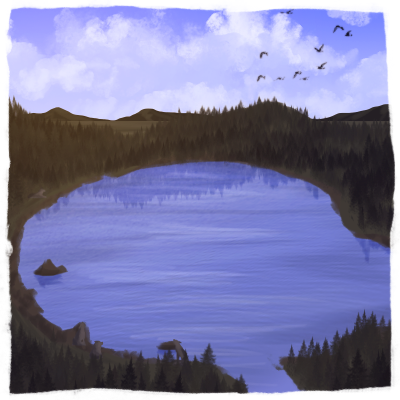
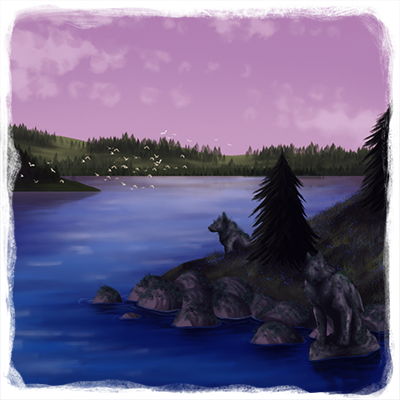
Located between the Shrine of Ragnarok and the Seat of the Alpha, Heimta means 'to bring back home.'
The Lake earned this name due to the forceful currents of it's lakes which drag anything caught in the rapids either to the feet of Fenrir's statue, or to be washed ashore in it's neighboring lake Skaro on the shores of sacred Ulfrheim grounds. Heimta is feared by locals and boasts the highest drowning rate of all the lakes; perhaps 'to bring back home' has a darker meaning?
Lake Skaro
(scar-o)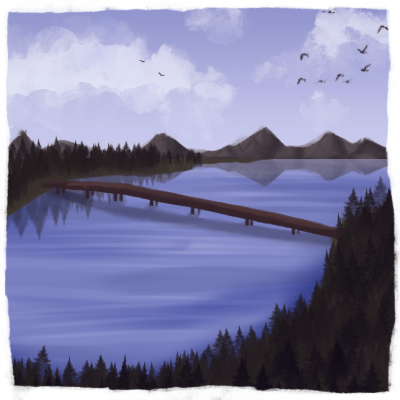
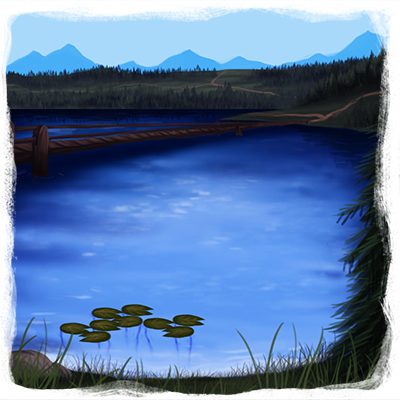
Situated between the feared Vale of Whispers and the Shrine of Ragnarok, Skaro has a dark background and infamous reputation.
Cruel hearted worshipers of the dark lady Hel baptized new initiates in the dark and churning waters of the lake, breathing a new and dark life into these Felvargs. It is widely avoided by most inhabitants of Ulfrheim, and is said to be haunted by the souls of the drowned.
Vale of Whispers
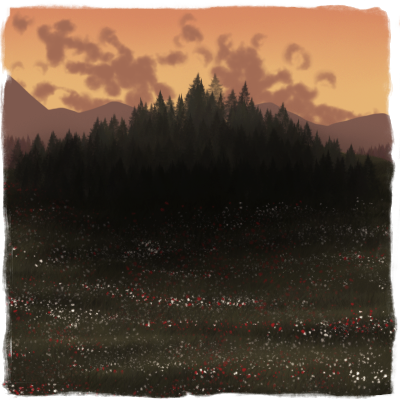
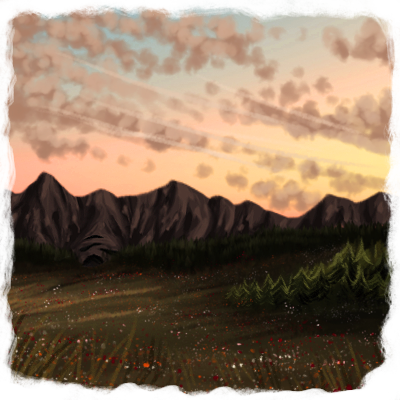
This feared meadow is home to a labyrinth of trees and pitfalls that leads to the ever dangerous Caves of Vaskar.
Many Felvargs have lost their lives in the never ending sea of mist, and those who dare to venture into the vale say they see and hear things that can't possibly be real... Haunted by the souls of lost wanderers, the vale is not for the faint of heart and is often used to weed out the weak from the strong.
Path of the Fallen
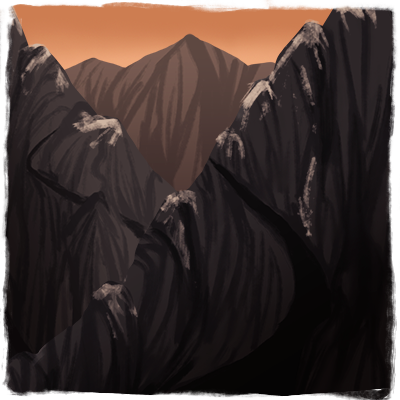
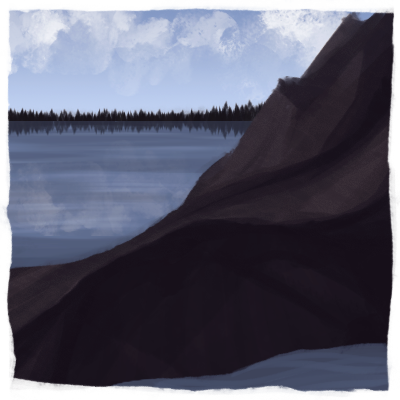
A narrow and treacherous path that descends from the Spine of Odin.
Many have fallen to their deaths trying to safely traverse the ledges and narrow passages, but only the truly sure of foot will make it down the path alive. Spirits of the fallen are said to linger here and are even rumored to push unfortunate travelers to their deaths.
Path of Valhalla
(val-hal-a)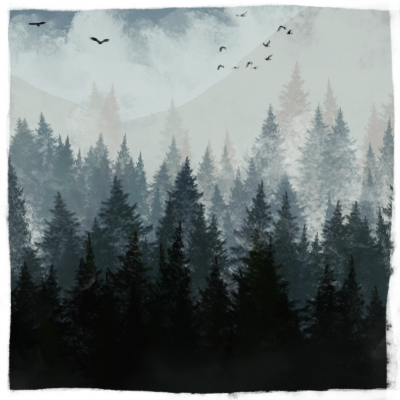
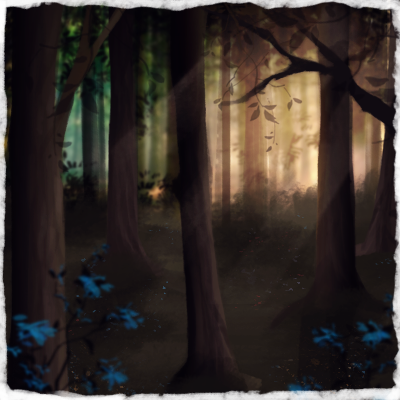
The largest forest on Ulfrheim, the Path of Valhalla is said to be exactly that; the stairway to 'heaven.'
It is easy to become lost and confused in the enormous forest, there are no real markers to help guide you to safety and because of this most who enter do not return. It is rumored that only Ulfr, Bjorn and Ylva pass safely through the forest, for they have boldly wandered the maze many a time.
Haldor's Pass
(hal-door)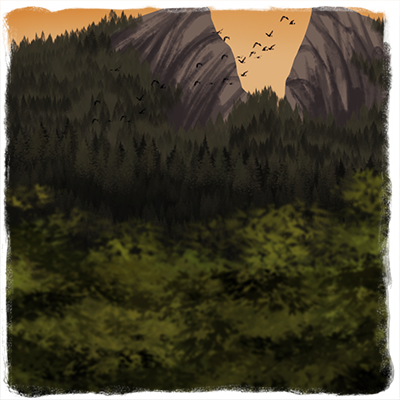
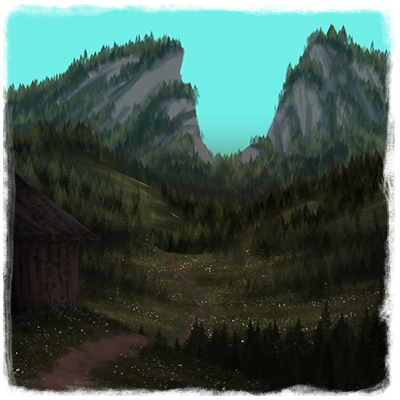
A winding pass through a small mountain range, cutting off Sanna's Grasp, the Shrine of Freyja and Reynir from the rest of Ulfrheim.
This small mountain range shields the small fishing town and the sacred grounds given in memory of the Goddess Freyja, and is treacherous to pass through to outsiders. It is named after Haldor, a Felvarg of legend who was said to guard the small town of Reynir from those with dark intentions.
Spine of Odin
(oh-din)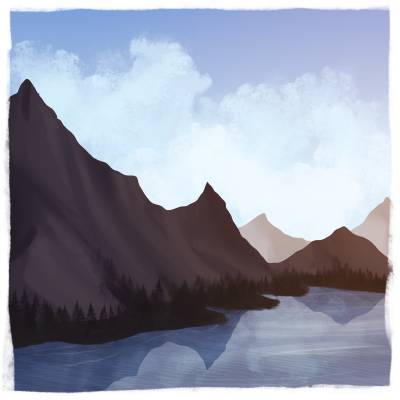
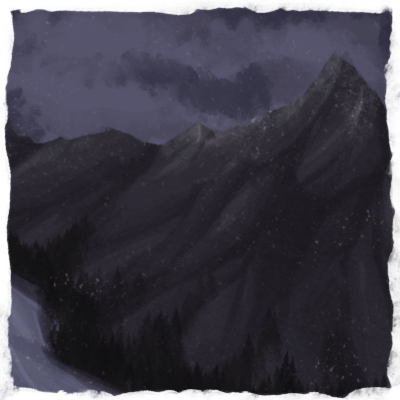
A treacherous mountain range nestled between Helheim's Gate and the Pass of Heidrun, The Spine of Odin can be seen from any point of Ulfrheim.
The mountain is deadly and many have fallen to the death, or found themselves claimed by the extreme cold of it's peaks.
Fenrir's Incisor
(ren-reer's in-sai-zer)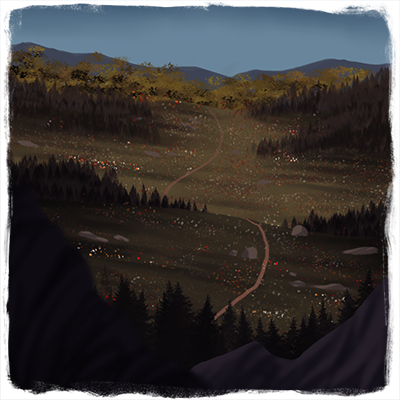
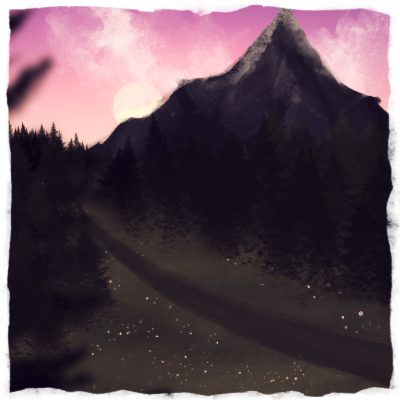
Residing Packs:
As the largest mountain range on Ulfrheim, there are many stories about how Fenrir's Incisor got it's name.
The most prominent and told of these tales is that the mountain range sprung up as a physical embodiment of Fenrir's rage when Hakon was slain, sprouting from the ground as sharp and deadly as the teeth in his jaws. The mountains lay on the far side of the Path of Valhalla, making it almost impossible to reach for the average traveler.

